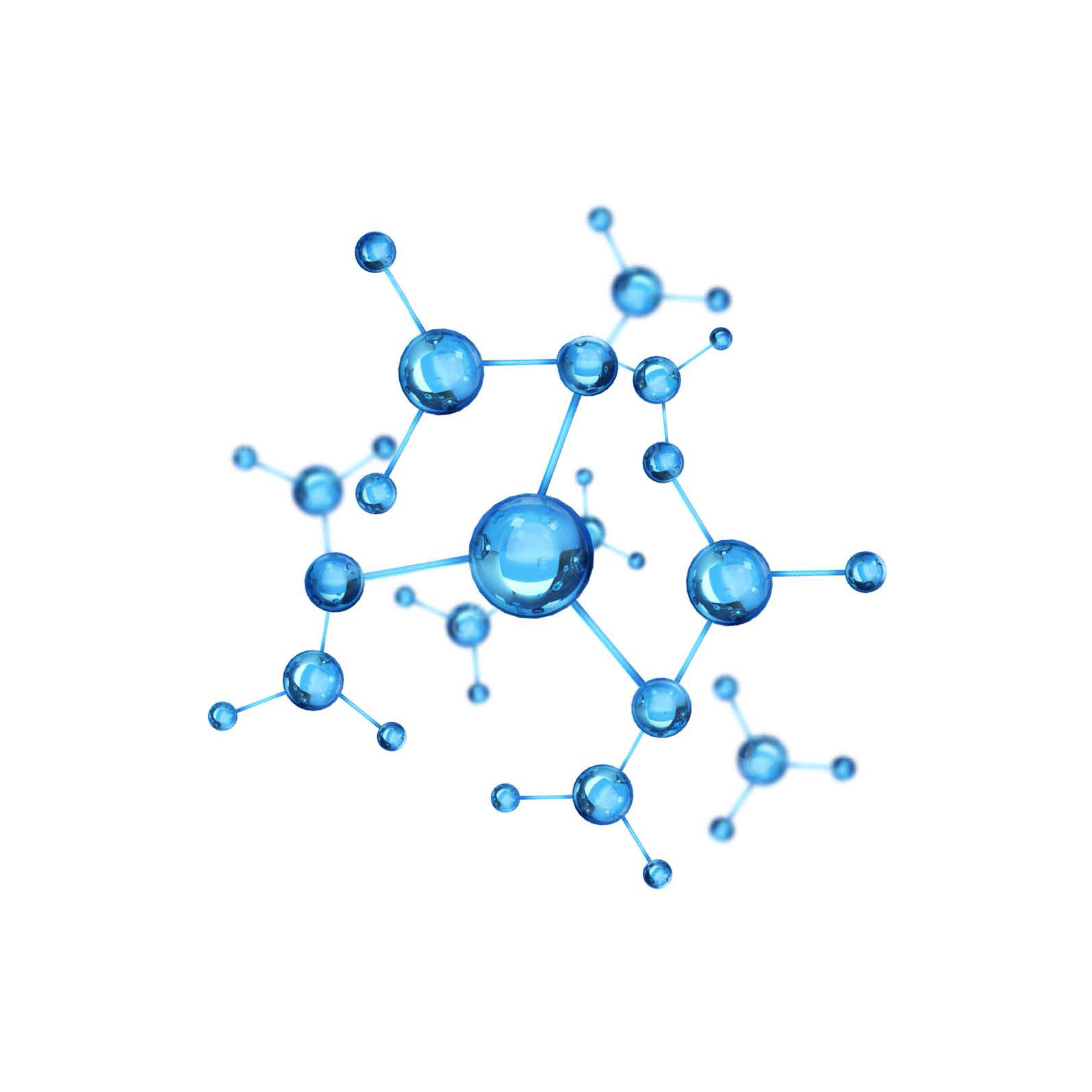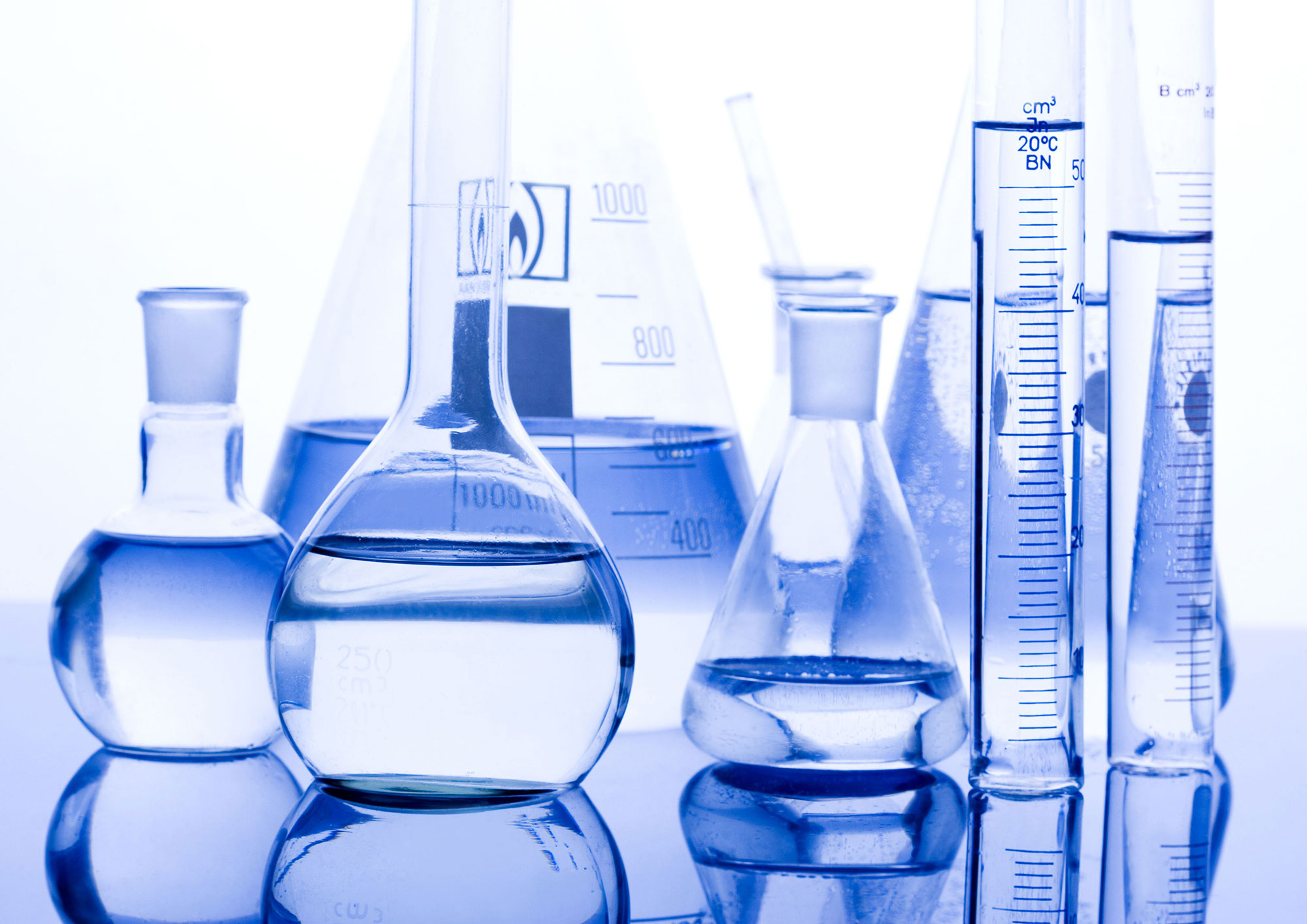




清洗剂概述
清洗剂
※清洗剂是能溶解RO系统内的CaCO3、CaSO4、SrSO4等无机垢类,藻类、细菌、病毒等微生物及其代谢产物(粘泥),铝、铁、锰等氧化物胶体,二氧化硅、硅酸盐胶体,粘土等颗粒物组成的污堵物,并恢复RO膜性能的化学药剂的总称。
※ 根据清洗剂的酸碱性,可分为酸性清洗剂、中性清洗剂、碱性清洗剂。根据效能,可分为常规清洗剂和配方清洗剂。常规清洗剂有柠檬酸、氢氧化钠、EDTA、磷酸三钠、三聚磷酸钠、十二烷基苯磺酸钠等。配方清洗剂则有多种成分配比而成,成分之间具有协调作用,因此比普通清洗剂有更好的清洗效果和恢复效果。
清鍊洗原理
※ RO膜系统的污堵物主要包括无机垢类、难溶盐类、胶体、微生物及其代谢产物、有机物、油脂等,由于RO多为卷式结构,其进水通道含一层隔网,不开放,因此大一些的污堵物一旦形成并堆积在RO进水隔网内,机械冲洗几乎无法将它们带出来。唯一的办法是将污堵物完全溶解,或者将污堵物转化成悬浊液,才能将其从RO膜元件内清洗出来。因此,清洗剂正好能够对症地溶解污堵物是关键,否则清洗效果很难预期。
※ 针对不同的垢类,有一些常见的清洗方案。比如CaCO3、Mg(OH)2、金属氧化物垢可采用酸洗;有机物、油脂、微生物等,可用碱洗;难溶盐类及普通方案清洗不佳时,可用配方药剂清洗。大量的现场清洗经验表明,RO系统的污堵物绝大多数情况下,成分不是单一的,因此单一的酸洗或碱洗很难取得最佳效果,往往需要酸洗、碱洗、再酸洗、再碱洗交替进行,才可能取得好的清洗效果。不过还有相当一部分系统,仅凭简单的酸洗、碱洗根本无法达到满意的效果,因为不同垢类互相包裹,难溶的垢类对其包裹的垢类有屏蔽保护作用,因此,简单的酸碱清洗不管用时,需采用配方药剂清洗。
※ 根据长期经验总结,我们认为影响膜清洗的因素有八个:时间、温度、流量、化学药剂、清洗用水、默特性、污染物层、操作人员。其中,尤其关键的因素是4个:时间、温度、清洗流量和化学药剂。温度决定药剂对污堵物的溶解速度;时间决定污堵物是否完全被洗掉;流量决定污堵物从RO膜面或隔网洗脱后,能不能充分冲洗出来;化学药剂决定污堵物能不能被溶解、洗脱下来以及是否与污堵物对症。
清洗剂应用的注意事项
※ 清洗之前,务必制定方案。制定清洗方案之前,务必对RO的污堵物加以确认。※ 清洗方案应遵循先易后难、先低温后高温、先低浓度后高浓度、先短时后延时的循序渐进的路线。※ 严重CaCO3结垢的系统,清洗时,注意放气(CO2)。
※ Fe、A1、Mn、Co等金属污染严重的系统,一旦这些成分被洗下来,应该及时放掉,避免RO膜遭到其催化降解破坏。
※ 不同的清洗步骡之间,应将系统冲洗干净,避免药品之间的负面反应。
Cleaning agent Overview
Cleaning agent
※ Cleaning agent is a general term of chemical agents that can dissolve inorganic scale such as CaCO3, CaSO4 and SrSO4 in the RO system, microorganisms such as algae, bacteria and viruses and their metabolites (mud), oxide colloids such as aluminum, iron and manganese, silica, silicate colloids, clay and other particles in the fouling, and restore the properties of RO membranes.
※ According to the acid and alkali of the cleaning agent, it can be divided into acid cleaning agent, neutral cleaning agent and alkaline cleaning agent. According to the efficiency, it can be divided into conventional cleaning agent and formula cleaning agent. Conventional cleaning agents are citric acid, sodium hydroxide, EDTA, trisodium phosphate, sodium tripolyphosphate, sodium dodecyl benzene sulfonate and so on. The formula cleaning agent is composed of a variety of ingredients, and the components have a coordination effect, so it has better cleaning effect and recovery effect than ordinary cleaning agents.
Principle of purification and washing
※ The fouling of RO membrane system mainly includes inorganic scale, insoluble salts, colloids, microorganisms and their metabolites, organic matter, grease, etc. Because RO is mostly rolled structure, its inlet channel contains a layer of barrier network, which is not open, so once the larger fouling is formed and accumulated in the RO inlet barrier network, mechanical washing can hardly bring them out. The only way is to completely dissolve the fouling, or convert the fouling into a suspension, in order to clean it out of the RO membrane element. Therefore, the cleaning agent can just dissolve the pollution blockage is the key, otherwise the cleaning effect is difficult to expect.
※ There are some common cleaning solutions for different scale types. For example, CaCO3, Mg(OH)2, metal oxide scale can be acid-washed; Organic matter, oil, microorganism, etc., can be washed with alkali; When insoluble salts and ordinary solutions are not good, formulations can be used for cleaning. A large number of on-site cleaning experience shows that the pollution blockage of the RO system in most cases, the composition is not single, so a single pickling or alkali washing is difficult to achieve the best effect, often need to pickling, alkali washing, re-pickling, re-alkali washing alternately, can achieve good cleaning effect. However, there are a considerable number of systems, only by simple pickling, alkali washing simply can not achieve satisfactory results, because different scales wrap each other, insoluble scale on its wrapped scale has a shielding protection effect, therefore, simple acid and alkali cleaning regardless of the time, need to use formula chemical cleaning.
※ According to long-term experience, we believe that there are eight factors affecting membrane cleaning: time, temperature, flow rate, chemical agents, cleaning water, thermal characteristics, pollutant layer, and operator. Among them, four factors are particularly critical: time, temperature, cleaning flow and chemical agents. The temperature determines the dissolution rate of the agent. Time determines whether the fouling is completely removed; The flow rate determines whether the fouling can be rinsed out fully after elution from the RO membrane or spacer. Chemicals determine whether the blockage can be dissolved, eluted, and treated properly.
Precautions for cleaning agent application
※ Before cleaning, be sure to make a plan. Before making a cleaning plan, be sure to confirm the RO fouling. ※ The cleaning program should follow the gradual route of easy and difficult, low temperature and high temperature, low concentration and high concentration, short time and delay. ※ For systems with severe CaCO3 scaling, pay attention to venting (CO2) when cleaning.
※ Fe, A1, Mn, Co and other metal pollution systems, once these components are washed down, should be promptly discharged to avoid the RO membrane by its catalytic degradation damage.
※ Between different cleaning steps, the system should be washed clean to avoid negative reactions between drugs.
Copyright 2020 - 2021 DESCSO. All Rights Reserved
Copyright 2020 - 2021 DESCSO. All Rights Reserved
添加专属客户服务
一对一回答您的问题

电话:025-86292120
Add dedicated customer service
Answer your questions one-on-one

Call:025-86292120
| Add a dedicated customer service |
|
|
Long press to identify and add |
Instrument manufacturer in the field of water quality analysis |
| Call:17521589555 | |
| Add a dedicated customer service |
|
|
Long press to identify and add |
Instrument manufacturer in the field of water quality analysis |
| Call:17521589555 | |